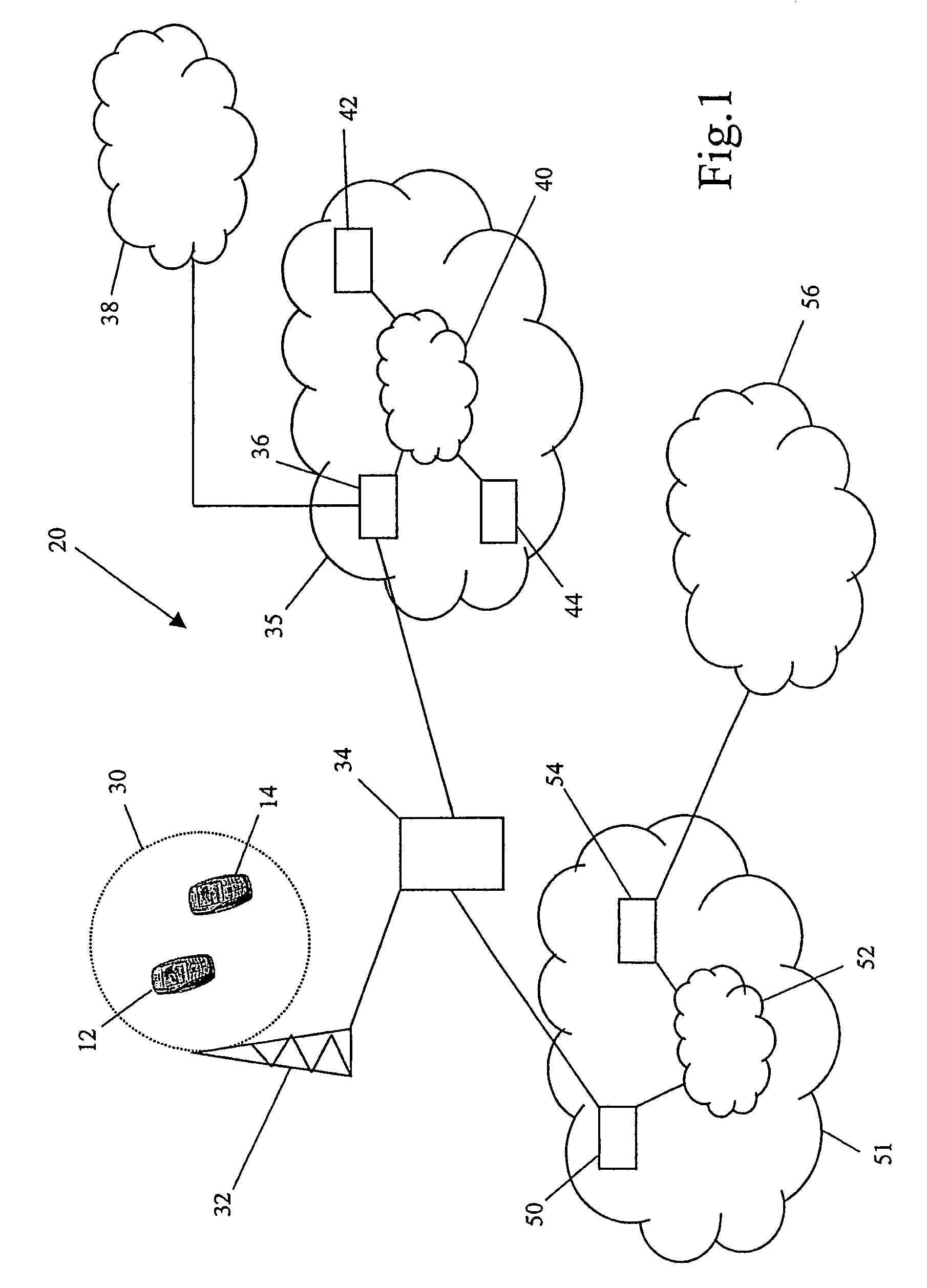Enabling combinational services in a communications network
a technology of combinational services and communications networks, applied in the field of mobile communications networks, can solve the problems of slowing down the enabling of packet connection between two users already, complicated use of such services, and inability to achieve the effect of reducing the complexity of use, and facilitating the enabling of packet connection between two users
- Summary
- Abstract
- Description
- Claims
- Application Information
AI Technical Summary
Benefits of technology
Problems solved by technology
Method used
Image
Examples
Embodiment Construction
[0059]FIG. 1 shows an example of mobile communication network 20 capable of providing mobile telephony services according to the GSM / GPRS standard. It is observed that a mobile network capable of providing mobile telephony services according to the UMTS standard has a structure very similar to the mobile network shown in FIG. 1. The mobile network 20 supports both communications on circuit connections, and communications on packet connections. To such end, the mobile network 20 includes a circuit network portion (or domain) 35 and a packet network portion (or domain) 51. Mobile terminals 12, 14 (for instance cellular phones, PDAs or Personal Digital Assistants, etc.) communicate on a radio interface with one or more radio base stations (BTS, Base Transmitter Station) 32. Every base radio station 32 provides mobile telephony services in a correspondent geographical area 30 commonly known under the name of “cell”. It is to be understood that the mobile network 20 provides services to ...
PUM
 Login to View More
Login to View More Abstract
Description
Claims
Application Information
 Login to View More
Login to View More - R&D
- Intellectual Property
- Life Sciences
- Materials
- Tech Scout
- Unparalleled Data Quality
- Higher Quality Content
- 60% Fewer Hallucinations
Browse by: Latest US Patents, China's latest patents, Technical Efficacy Thesaurus, Application Domain, Technology Topic, Popular Technical Reports.
© 2025 PatSnap. All rights reserved.Legal|Privacy policy|Modern Slavery Act Transparency Statement|Sitemap|About US| Contact US: help@patsnap.com



